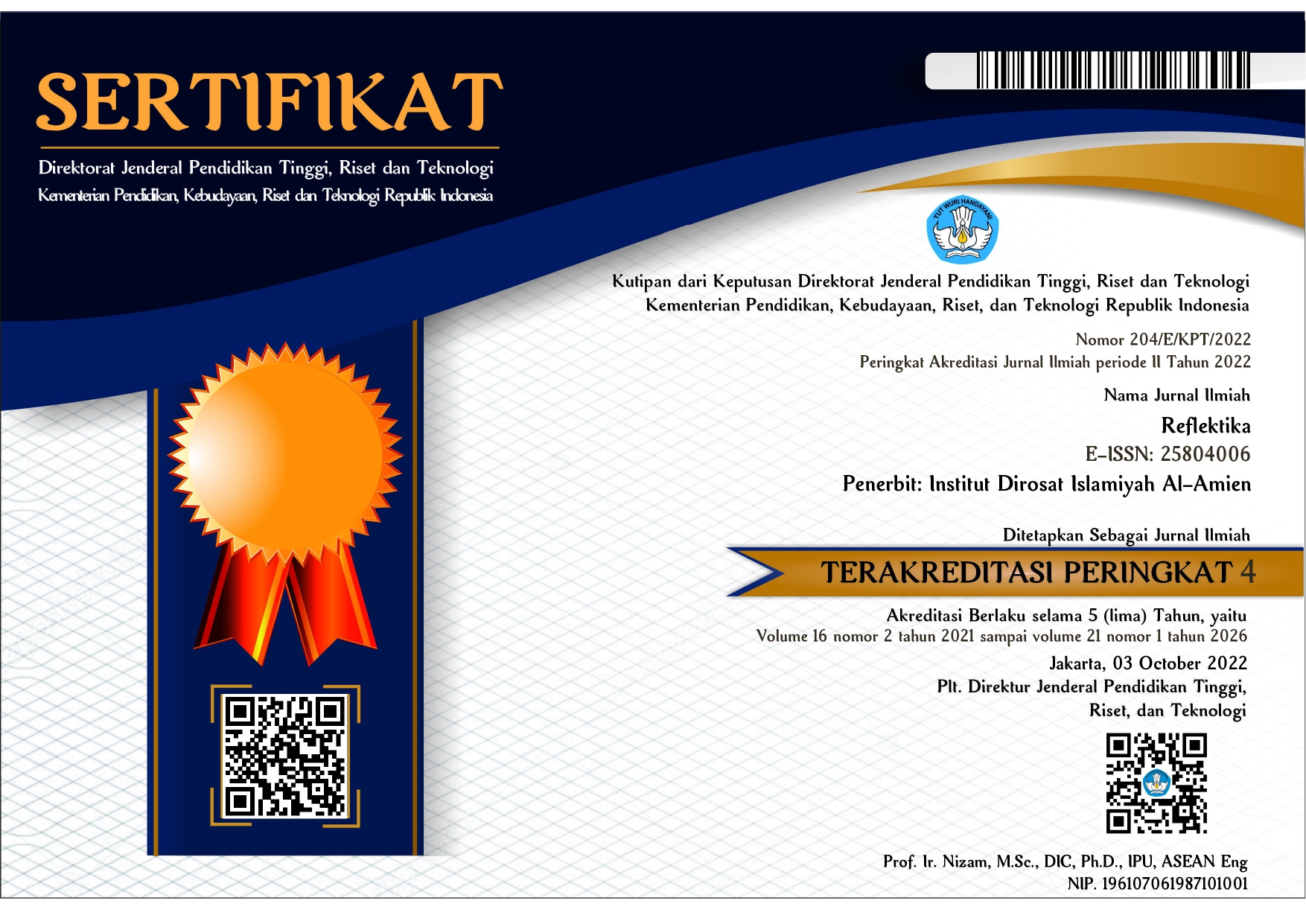THE STUDY OF TEACHERS’ FEEDBACK IN ONLINE WRITING ASSESSMENT
Abstract
Keywords
References
Abdullah, M. Y., Hussin, S., & Shakir, M. (2018). The effect of peers’ and teacher’s e-feedback on writing anxiety level through CMC applications. International Journal of Emerging Technologies in Learning, 13(11). Retrieved from https://online-journals.org/index.php/i-jet/article/view/8448.
Abdullah, M. Y., Hussin, S., & Shakir, M., ‘The Effect of Peers’ and Teacher’s e-Feedback on Writing Anxiety Level through CMC Applications’, International Journal of Emerging Technologies in Learning, 13.1 (2018) https://online-journals.org/index.php/i-jet/article/view/8448.
Agbayahoun, Juvenale Patinvoh, ‘Teacher Written Feedback on Student Writing: Teachers’ and Learners’ Perspectives’, Theory and Practice in Language Studies, 6.10 (2016), 1895 https://doi.org/10.17507/tpls.0610.01.
Ashrafi, S., & Foozunfar, M, ‘The Effects of Oral, Written Feedback Types on EFL Learners’ Written Accuracy: The Relevance of Learners’ Perceptions’, Proceedings of the 2nd National Conference on English Language Studies: Applied Linguistics Perspectives on EFL, 2018, May, 2–22
Daud, Afrianto, ‘Teaching Writing Using Google Apps For Education (GAFE)’, Indonesian Journal of Economics, Social, and Humanities, 1.1 (2019), 17–24 https://doi.org/10.31258/ijesh.1.1.2.
Ene, Estela, and Thomas A. Upton, ‘Synchronous and Asynchronous Teacher Electronic Feedback and Learner Uptake in ESL Composition’, Journal of Second Language Writing, 41.May (2018), 1–13 https://doi.org/10.1016/j.jslw.2018.05.005
Faroha, D. N., Muslem, A., & Fajrina, D, ‘Reseach in English and Education’, 1.2 (2016), 137–145
Faroha, Diah Nifsu, Asnawi Muslem, and Dian Fajrina, ‘E-Issn 2528-746x’, Reseach in English and Education, 1.December (2016), 137–45
Fattah, S. F. E. S. A., ‘The Effectiveness of Using Whatsapp Messenger as One of Mobile Learning Techniques to Develop Students’ Writing Skills’, Journal of Education and Practice, 32.6 (2015), 115–127 http://libezproxy.open.ac.uk/login?url=http://search.ebscohost.com/login.aspx?direct=true&db=eric&AN=EJ1083503&site=ehost-live&scope=site.
Fred N. Kerlinger, Behavioral Research : A Conceptual Approach (New York: Holt, Rinehart and Winston, 1979)
Glasow, P. A, ‘Fundamental of Survey Research Methodology’, Mitre Washington C3 Center Mc Lean, 2005
Gürbüz, Salih, ‘Survey as a Quantitative Research Method’, Research Methods and Techniques in Public Relations and Advertising, January 2017, 2017, 141–62 https://doi.org/10.3726/b10899.
Harmer, J, How to Teach English (Beijing: Foreign Language Teaching and Research Press, 2000)
Jamalinesari, A., Rahimi, F., Gowhary, H., & Azizifar, A, ‘The Effects of Teacher-Written Direct vs. Indirect Feedback on Students’ Writing’, Procedia - Social and Behavioral Sciences, 2015, 116–123. https://doi.org/10.1016/j.sbspro.2015.06.018.
Khairani, Israul, ‘English Teachers’ Oral Feedback in Teaching and Learning Process’, Journal of English Language Teaching, 9.1 (2020) http://ejournal.unp.ac.id/index.php/jelt/article/view/108195
Leng, Kelly Tee Pei, ‘An Analysis of Written Feedback on ESL Students’ Writing’, Procedia - Social and Behavioral Sciences, 123.2000 (2014), 389–97 https://doi.org/10.1016/j.sbspro.2014.01.1437
Mcfadzien, N., ‘Why Is Effective Feedback so Critical in Teaching and Learning?’, Journal of Initial Teacher Inquiry, 1.1 (2015), 16–18 http://assessment.tki.org.nz.
Mulliner, E., & Tucker, M, ‘Feedback on Feedback Practice: Perceptions of Students and Academics’, Assessment and Evaluation in Higher Education, 42.2 (2017), 266–288
Neuman, W. Lawrence, Social Research Methods: Qualitative and Quantitative Approaches, Pearson Education Limited, 2014 https://doi.org/10.2307/3211488.
Rafiqi, Iqbal, Fatati Nuryana, Maftuhatul Faizah, and Achmad Jufri, ‘Investigasi Peran Fee Based Income Terhadap Profitabilitas (ROA) di Bank Syariah Indonesia (Studi Kasus Pada PT. Bank Syariah Mandiri Periode 2005-2014)’, 1.2 (2020), 123–44 https://doi.org/10.28944/masyrif.v1i2.474.
Ratminingsih, Ni Made, Universitas Pendidikan Ganesha, A A I N Marhaeni, Universitas Pendidikan Ganesha, L P D Vigayanti, and M A Universitas Pendidikan Ganesha, ‘Self- Assessment : The Effect on Students ’ Independence and Writing Competence’, 11.3 (2018), 277–90
Silver, Rita, ‘What Does It Take to Make a Change? Teacher Feedback and Student Revisions RITA SILVER’, Distribution, 6.1 (2007), 25–49
Srichanyachon, N., ‘Teacher Written Feedback for L2 Learners’ Writing Development’, Silpakorn University Journal of Social Sciences, Humanities, and Arts, 12.1 (2012), 7–17 www.journal.su.ac.th.
Susanti, A., & Tarmuji, A, ‘Techniques of Optimizing Whatsapp as an Instructional Tool for Teaching EFL Writing in Indonesian Senior High Schools’, International Journal on Studies in English Language and Literature, 4.10 (2016), 26–31 https://doi.org/10.20431/2347-3134.0410005.
Susanti, Ani, ‘Teachers’ Corrective Feedback on Students’ L2 Writing: State of the Art’, Abjadia, 2.2 (2017), 81–94 https://doi.org/10.18860/abj.v2i2.5364.
DOI: 10.28944/reflektika.v15i2.591
Refbacks
- There are currently no refbacks.


.png)

